Foreword
Web 3.0, based on blockchains and decentralised data, is often discussed from the point of view of its drawbacks. When people are asked about the threats of the decentralised web, AI comes up first as presenting challenges concerning privacy, security, crime, and environmental impact.
On the other hand, the advantages of blockchain technology are seen as transparency, efficiency, and decentralised management. In a decentralised model ground rule, data protection and trust are needed in a whole new way. To be part of the next phase of the internet, we need to understand Web 3.0 and phenomena that will be involved.
In this memorandum, we have summarised the main phenomena where Web 3.0 can offer opportunities and solutions, but we also highlight the other side of the coin. The aim of the memorandum is to provide a wide-ranging assessment of how Web 3.0 can affect the world around us. The articles cover ten topics, looking at the threats and opportunities of a decentralised web from economic, social, cultural, and ecological perspectives, or in combination.
The topics covered in the memo are energy consumption, supply chain traceability, changes in organisational forms, virtual spaces, the transformation of social media, the potential of democracy, the transformation of the creative economy, the role of cryptocurrencies in global politics, decentralised financial services and money laundering and crime. In the spring of 2023, Sitra published the study “6+1 Recommendations for Finland – How can Regulation Boost the Prerequisites for Web 3.0 business?” It will not be possible to implement the recommendations on a broad front if we do not better understand the opportunities and threats entailed by Web 3.0 from different perspectives. Because blockchains are still a relatively new technology, their regulation lags behind their development.
The Web 3.0 paradigm involves a strong emphasis on privacy protection. This is exactly what makes it an interesting opportunity. A decentralised internet may be fairer than the current one, which means that there is the scope to build a people-centred, fair data economy based on European values. We hope that the articles in this memorandum will provide readers with valuable information and perspectives on the sustainability of Web 3.0 phenomena.
We would like to thank all the creators who have enabled a broad assessment of the topic. In addition, a big thank you to the Miltton team who helped make this happen. It is in all our interests to understand how we can create a more sustainable future within the Web 3.0 development.
Helsinki, August 2023
Kristo Lehtonen, Director, Fair Data Economy theme
Helena Mustikainen, Senior Lead, Web 3.0 project entity
Summary
Web 3.0 is a development phase of the Internet that aims to provide services that facilitate decentralised decision-making and commerce.
Decentralised decision-making may use decentralised autonomous organisations (DAO) and commerce may use cryptocurrencies or non-fungible tokens (NFTs), for example, typically authenticated by blockchains. Web 1.0 refers to the early days of the internet, when web pages could only be read, while Web 2.0 refers to the current stage of the internet’s development, where interactive web services are the norm.
The development of Web 3.0 offers many opportunities, but there are also concerns and risks. This new era of the Internet has the potential to revolutionise the way we interact with each other and with the world. We need more information to realise the full potential of this development and for us to be able to prepare for the risks. We also need a clear vision of how sustainable the current development is for the economy, the environment, society, and culture. Will everyone be included in the development or will Web 3.0 increase inequality? Will Web 3.0 lead to increased money laundering and crime? And how significant is the energy consumption that Web 3.0 technologies will require?
This collection of articles explores the financial, social, and cultural sustainability of Web 3.0 development and the related key technologies. It also takes a closer look at the various phenomena associated with Web 3.0. The collection comprises 10 articles by creators who are experts in both Web 3.0 development and sustainability.
Will Web 3.0 lead to a fairer social media and a more transparent democracy?
The power of the digital giants is growing, and the list of problems with social media is a long one. Social media services based on Web 3.0 technologies provide new alternatives, promising users the power to manage their own data. Heikki Aura and Jukka Vahti consider whether Web 3.0 will bring us a new age of social media.
The status of democracy has been weakened by many crises and social media. The article by Joonas Leppänen and P-J Hyytiäinen explores blockchain technologies to help democracy in danger of decay. At the very least, blockchains could significantly increase the transparency of electoral systems.
The Web 3.0 development path has brought with it a new way of organising. Old models are being challenged by decentralised autonomous organisations (DAOs) using blockchain technology. Marja Konttinen and Helena Mustikainen argue that the appeal of DAOs lies in a new kind of community, flexibility, and dynamism, but that they are also vulnerable to risks and manipulation.
The development of three-dimensional virtual worlds is still in its infancy, but metaverses are expected to change how businesses operate in the same way that the initial introduction of the internet did. To make the most of the metaverse’s development, companies and organisations that use it need more strategic insight, write Mika Ruokonen and Paavo Ritala.
Web 3.0 is both good and bad from an environmental perspective
Future Web 3.0 technologies can offer solutions to many sustainability challenges, but at the same time, they consume enormous amounts of energy and natural resources. For the new technologies to be able to lead us to a genuinely better world, their energy consumption and other environmental impacts need to be systematically assessed. Lotta Toivonen and Heidi Kalmari ask how the future Web 3.0 can be kept within the Earth’s carrying capacity.
Can Web 3.0 technologies be used to prevent harmful environmental impacts and promote the circular economy? Businesses can use blockchains to implement their corporate social responsibility more ambitiously and improve their environmental footprint by providing more accurate information about the real environmental and human rights impacts of value chains, write Mari Pantsar and Kristo Lehtonen.
Blockchain used to destabilise and renew economic structures
Decentralised financial services have become increasingly popular in recent years. This new financial world built on blockchains is attracting professional investors as well as fraudsters and criminals. Although the hype has died down and the problems have become visible, the new money system might be here to stay, writes Thomas Brand.
The digital operating environment has ushered in a new creative era in which art and its institutions are undergoing a complete transformation. Web 3.0 technologies offer creators the opportunity to reshape their content and art, as well as the way in which the value, ownership and remuneration of artworks and the associated sharing of risks and profits are defined. For institutions such as museums, this era means a complete reinvention of their entire concept, argue Kimmo Levä and Akseli Virtanen.
Cryptocurrencies offer an attractive alternative for countries that want to be free from the “dominance of the dollar”. Can cryptos change the status of the dollar and form the basis of a new economic system? This is the question addressed by Alku Sirén and Risto E.J. Penttilä.
Web 3.0 technologies have been rapidly adopted for money laundering and criminal activities, but the trend can also be reversed in a direction that promotes security and trust, writes Patrik Elias Johansson. Regulation is needed, but it is also a question of who is faster – the cops or the robbers.
The environment and Web 3.0
Kristo Lehtonen and Mari Pantsar: Can blockchain technology be used to prevent harmful environmental impacts and promote the circular economy?
For businesses to be able to be more ambitious in their corporate social responsibility and improve their environmental footprint, we need more accurate information about the actual environmental and human rights impacts of value chains. Blockchain technology can play a crucial role in this.
How can we help ensure that sourcing metals from China and Congo, or cotton from India, is sustainable, both environmentally and in terms of human rights? The answer is traceability – and potentially in blockchains.
It is still difficult to obtain information on the environmental impact of different raw materials. For example, cotton for the textile industry, spices for the food industry or metals for manufacturing are sourced from a global market through commodity exchanges, and it can be even impossible to get information about their origin and environmental impacts.
Most Finnish companies are well aware that sourcing raw materials can lead to loss of biodiversity. According to the Ministry of the Environment’s recent memo The business sector and biodiversity, many Finnish companies hope that Finland will lead the way in the traceability of materials and the development of related tools.
Indeed, many companies are already on the move. Nokia, for example, aims to consider the impact of its operations on natural capital throughout its value chain. In addition to biodiversity, it considers the effects of its operations on geodiversity, meaning the diversity of inanimate nature, such as metals and minerals.
EU requires businesses to improve traceability
EU legislation also creates pressure to improve traceability and thus the mitigation of environmental impacts and biodiversity loss. The European Commission’s Green Deal takes a strong stance on stopping global biodiversity loss and mitigating the climate crisis with its Green Deal. The EU Deforestation Regulation, which has just entered into force, aims to curb the biodiversity losses outsourced to regions beyond Europe. The Regulation prohibits the marketing of commodities and goods such as palm oil, coffee, cocoa, meat, soy, timber, and rubber from 2021 if their production has caused deforestation or forest degradation.
The European Commission has also made several important legislative proposals also as part of its circular economy programme. These proposals aim to obtain information on the entire value chain of materials and products and to mitigate both EU and global biodiversity loss through a transition to a circular economy.
Blockchains can increase transparency in value chains
High expectations have been placed on blockchain technologies, which are an integral part of the Web 3.0 development path, in terms of them making it possible to significantly improve the traceability of raw materials.
Sitra defines a blockchain as a continuously accumulating decentralised data entity in which all transactions are in chronological order, confirmed by all parties and stored in such a way that nothing can be altered or falsified. A blockchain generates a digital log of transactions. These records are copied and stored in a decentralised manner in a public blockchain, and no single party has a centralised server, and no single party can unilaterally alter or forge the entries.
Traceability of production chains requires trust between companies and organisations. Blockchains are said to automate this trust. A blockchain can also be closed, in which case it is only available between the companies that need the data, with all of them having access to the same shared data.
In addition, blockchain entries can be automated through smart contracts. A smart contract is a programme implemented using blockchain technology, which enables the automatic exchange of objects of value according to pre-defined rules. A smart contract removes intermediaries from the process and makes it reliable. A smart contract combined with a shared blockchain works like a vending machine where the user inserts money and the machine releases the product without the involvement of a salesperson.
Digital product passports spark interest
Digital passports are the most concrete example of how blockchain technology can be used to improve traceability. In the future, different parties, such as consumers, producers, recyclers, remanufacturers, and the authorities, will be able to read not only the product information, but also the product’s content and origin and environmental footprint from digital passports. One of the best-known examples is from last year, when the telecommunications operator Telefonica Tech and Exxita Be Circular, a technology company specialising in the circular economy, created the first European product passport using both blockchains and artificial intelligence.
In addition to the traceability of the product components, product passports provide information on the sustainability and repairability of products and components. This will allow a monetary value to be specified for devices in the market for remanufactured products. In addition, the water and waste management company Suez, for example, already uses blockchains to record all stages involved in transferring sludge from wastewater to agricultural land.
In Finland, Technology Industries of Finland, and Finnish Textile & Fashion, among others, have been exploring the opportunities provided by digital product passports, and Sitra is involved in related pilots as a funder. Moreover, Sitra is also involved in preparing a product passport experiment around traffic emissions data.
Regulation and global co-operation are needed
Blockchains offer an inspiring potential for tracing materials but using them on a larger scale requires a new culture of co-operation that is still foreign to many organisations. It should also be noted that small and medium-sized enterprises do not necessarily have the expertise or resources to adopt blockchains without external support.
The development of common rules and standards is essential for the success of digital product passports. It would be in the interest of both manufacturers and product users if the product information of different products could be presented in a uniform way and combined. The EU is a sufficiently large economic area to make the creation of uniform rules worthwhile.
From the fair data economy perspective, digital passports have great potential. For consumers, they would make it easier to make sustainable choices, and for companies, they would be an opportunity to increase the transparency of the product’s footprint. For Finnish companies, digital product passports realised with blockchains are indeed a viable area for increasing leadership in sustainable development.
Digital passports are the most concrete example of how blockchain technology can be used to improve traceability.
Bibliography and references:
A new Circular Economy Action Plan (europa.eu)
New proposals to make sustainable products the norm (europa.eu)
Business sector and biodiversity: Where are we now and what is needed? (valtioneuvosto.fi)
Blockchain can facilitate the circular economy transition (ellenmacarthurfoundation.org)
CircularChain SUEZ – SUEZ Group
6+1 recommendations for Finland – How can regulation boost the prerequisites for Web 3.0 business?
Heidi Kalmari and Lotta Toivonen: How can the future Web 3.0 be kept within the Earth’s carrying capacity?
Future Web 3.0 technologies can offer solutions to many sustainability challenges, but at the same time, they consume enormous amounts of energy and natural resources. For the new technologies to genuinely lead us to a better world, their energy consumption and other environmental impacts must be systematically assessed.
Digitalisation has a dual role to play in relation to the environment. It offers solutions that can have either direct or indirect environmental benefits, but at the same time, the increasing use of digital services and new devices increases the consumption of energy and natural resources. The more data that is transferred and the more computing power that is required, the faster and larger data centres are needed. At the same time, more powerful information networks and new devices are also needed.
Web 3.0 refers to a new phase in the development of the internet that decentralises decision-making and services. From an environmental perspective, the Web 3.0 development path has the same dual role: blockchains and smart contracts can provide excellent solutions for accelerating the sustainable transition or building a fairer society. However, the environmental challenge of Web 3.0 technologies is the waste of resources, such as increasing energy consumption and increasing volumes of electronic waste.
Only appropriate data should be stored in blockchains
Web 3.0 is an umbrella term that encompasses several forms of technological development, such as blockchains, metaverse, virtual currency, non-fungible tokens (NFTs) and decentralised model innovation. Each of these forms of development can lead us towards a more sustainable society when applied correctly and planned intelligently. Likewise, any one of them can lead development in a direction that is undesirable in terms of a sustainable future.
A good example of a blockchain-based solution, which is expected to bring significant environmental benefits is the digital product passport. With a digital product passport, both parties in the value chain and consumers can obtain important information about materials and their origin, as well as the repairability of products, among other things. On the other hand, any decentralised solution for data sharing and processing is suitable for this use case.
Blockchains consume more energy, the newer data is stored in the chain and the more it needs to be validated. The more products that use digital product passports, the more energy blockchains consume. To reap the environmental benefits of digital product passports, it is necessary to aim to minimise energy consumption and only store the essential data on the blockchain from the outset.
The energy consumption of virtual currencies has decreased significantly
In recent years, there has been a lot of debate about the energy consumption of virtual currencies, and Bitcoin in particular, as Bitcoin mining consumes enormous amounts of energy. As defined by the Financial Supervisory Authority, bitcoin is a decentralised virtual currency that can be exchanged for legal tender, such as the euro. According to the latest statistics from Cambridge University, the annual energy consumption of Bitcoin is about 130 terawatt-hours, while Finland’s energy consumption, for example, was about 82 terawatt-hours in 2022. In the US, data centres that mine Bitcoin have occasionally even been paid to temporarily suspend operations to guarantee the supply of electricity to homes in the area.
However, more energy-efficient alternatives to energy-intensive Bitcoin have already emerged. Ethereum, which has become the world’s second largest cryptocurrency, has managed to reduce its energy consumption by 99.9 per cent by switching to a new method of authenticating transactions. While the authentication of Bitcoin transactions is based on the proof-of-work mechanism, Ethereum authenticates transactions with the proof-of-stake. In the proof-of work method, transactions are authenticated by computers around the world racing to solve difficult computational puzzles. This process is called mining. Mining requires extremely powerful computers, and it consumes enormous amounts of electricity. In the proof-of-stake method, transactions are authenticated by depositing cryptocurrency as collateral. The use of collateral does not use much electricity.
While the energy consumption of future virtual currencies will probably be lower than that of Bitcoin, it is still a cautionary example. There is currently a debate on whether AI-based solutions, for example, could be the next “energy guzzlers”. Recent estimates suggest that the electricity consumption of AI will follow the same formula that we have particularly seen with Bitcoin.
What is the real environmental burden of new technologies?
The pace of the development of Web 3.0 technologies or their share of the total energy consumption of the ICT (information and communication technology) sector cannot be currently estimated. The popularity of virtual currencies may increase significantly and blockchain technology may be used more extensively for various purposes. At the same time, a metaverse allowing a virtual world in which people can interact more closely with one another is also envisioned. Nevertheless, it should be noted that blockchain technology and the metaverse are two independent paths of technological development.
Despite improvements in energy efficiency, the electricity consumption of the ICT sector continues to grow, which is not a good thing if the supply of renewable energy is lower than its demand. The ICT sector’s share of the world’s annual electricity consumption is expected to reach at least 6 and up to 14 per cent within the next ten years. According to the wildest projections, the ICT sector’s share of global energy consumption could rise to more than one-fifth by 2030. And these figures do not even include the energy consumed by digitalisation elsewhere in society, such as municipalities and central government, businesses and households, whose consumption is not included in the ICT sector’s consumption figures.
New technologies also pose other environmental challenges. For example, e-waste, the world’s fastest-growing type of waste, is a significant problem. Every new generation of technology has so far required new equipment, which not only increases the amount of electronic waste but also the need for raw materials for new equipment. The amount of electronic waste in 2021 is estimated to have weighed more than the Great Wall of China, the heaviest human-made structure. Of all this waste globally, only 17 per cent is properly recycled.
Energy consumption must be taken into account from the outset
For sustainable development, it is important to critically assess technological developments and exponentially growing data volumes. Currently, consumers already account for about 80 per cent of global internet traffic and downloading and uploading videos accounts for almost 80 per cent of this traffic. In comparison, the amount of data traffic between companies has been estimated to be only some 10 per cent. A large proportion of data use and most blockchain and metaverse-based services are thus not expected to have any specific environmental benefits for the time being. A decisive factor for the environmental benefits provided by Web 3.0 technologies will therefore be the use to which they are put.
There is an urgent need to overcome the ecological sustainability crisis – climate crisis, biodiversity loss and depletion of natural resources, and therefore to steer technological development in the right direction. It is the responsibility of companies developing Web 3.0 technologies to take energy consumption into consideration, but this can be encouraged, for example through regulation or procurement criteria. The measurement of environmental impacts also needs to be improved. In Finland, one of the criteria for public procurement of new technologies could be to include the energy consumption of the application or service in question and its monitoring at all stages of its life cycle.
We are in a hurry to change our way of life to fit within the limits of the carrying capacity of the one Earth, so we cannot afford to fail. We must act right now.
For sustainable development, it is important to critically assess technological developments and exponentially growing data volumes.
Bibliography and references:
Interview 10 May 2023: Timo Seppälä, researcher at Aalto University
Aalto-yliopiston politiikkasuositus 7.1.2021: Onko säästö Suomessa päästö muualla?
Cambridge Bitcoin Electricity Consumption Index.
Etla Report 104: Energy and Electricity Consumption of the ICT Sector in Finland.
Finnish Energy: Energy Year 2022 – Electricity.
GTK Tutkimustyöraportti 53/2021: Digitalisaatio ja luonnonvarat.
IMF Publications: Digital Currencies and Energy Consumption, 2022.
Khazzaka, Michel. ‘Bitcoin: Cryptopayments Energy Efficiency’
The Global E-Waste Monitor 2020.
The environmental impact of cryptocurrencies using proof of work and proof of stake consensus algorithms: A systematic review
The Real-World Costs of the Digital Race for Bitcoin. The New York Times.
Journal of Sustainability and Environmental Management (JOSEM): A Systematic Review of the Pros and Cons of Digital Pollution and its Impact on the Environment
Renewable Energy Will Not Solve Bitcoin’s Sustainability Problem: Joule (cell.com)
The economy and Web 3.0
Patrik Elias Johansson: The race in the Web 3.0 world: who will win, criminals or enforcers?
Web 3.0 technologies have been quickly adopted for money laundering and criminal activities, but the trend can also be reversed in a direction that supports safety and trust. Regulation is needed, but it is also a question of which side runs faster – the cops or the robbers?
Where there is money, there is always crime. In the Web 3.0 world, criminals have been quick to learn how to use blockchain crypto-assets, decentralised services, and smart contracts to their own advantage. As defined by the Financial Supervisory Authority, crypto assets refer to digital value or currency that can be transferred, stored, and traded electronically and is not issued or guaranteed by a central bank or a public authority.
However, it is a common misconception that crime associated with Web 3.0 technologies, more familiarly known as crypto crime, would only be connected to virtual currency theft, hacking or, more generally, information network-assisted crime. Unfortunately, it is a much broader phenomenon, and above all concerns money laundering. Without access to money laundering, criminals could not use their money earned through crime – and intervening in money laundering impacts the general profitability of crimes, above all.
Because crypto assets have digital value, they are “crime type-neutral”. This means that crypto assets can be connected to any crime that results in financial gain. However, the challenge is that crypto assets obtained through crime can be converted into seemingly legal assets through new forms of money laundering.
Web 3.0 provides an extra layer to money laundering
Money laundering refers to activities referred to in Chapter 32, Section 6 of the Criminal Code (39/1889), where the proceeds of crime are circulated through a legal payment system to conceal or disguise the actual nature, origin, or owners of the assets. Money laundering requires a previous crime that has resulted in financial gain.
Money laundering is carried out in three stages: placing, layering and integration. In the Web 3.0 world, these stages are embedded in blockchains, smart contracts and crypto assets. It can be said that Web 3.0 creates an additional layer that provides criminals with more ways to launder money.
In practice, this means that the proceeds of crime are converted into crypto-assets in one way or another and thereby introduced to a blockchain-based exchange system. Once the proceeds of crime are on a blockchain, their layering begins. All transactions and related basic information are stored in blockchains. To prevent the possibility of tracking them, criminals use various techniques to make tracking more difficult and disguise the origin of the assets.
After layering, integration starts. This involves trying to convert the laundered money back into, say, euros so that they can be used in the real world. There are several ways to convert crypto assets into euros or dollars, the most common being to transfer the funds to centralised exchange services and sell them there for the desired currency.
EU is leading the way in regulation
The regulation of crypto assets began in Europe precisely because of the associated risks of money laundering and terrorist financing. The 5th EU Anti-Money Laundering Directive (AMLD5) that entered into force in 2018 was the starting point for the regulation of crypto assets. For the first time, it defined what virtual currency means. It was only with the definition of the directive that the phenomenon could be perceived, and, for example, requirements imposed on those involved in it.
One of the most significant changes brought about by the directive is that parties working with virtual currencies have become subject to reporting obligations. This means that if an individual or entity wants to offer virtual currency-related services, they must, among other obligations, identify their customers with sufficient accuracy and verify the origin of their assets.
Following the act that entered into force in Finland in 2019, Finnish crypto parties were included in the scope of the Money Laundering Act, which contributed to the ability of the police to obtain information related to virtual currency transfers and thereby solve crimes. In this case, regulation was appropriate, and I would argue that more and better regulation is needed for the development of the entire sector.
Fortunately, it is on the way. In particular, the EU’s future Markets in Crypto Assets Regulation (MICA), when it enters into force (in 2024), will set harmonised rules for the crypto sector throughout the European Union. With the regulation, Europe will have a clear-cut legal framework within which operators can trust that they may operate in the sector in question in the first place.
Sitra has also prepared a legislative proposal for the field of Web 3.0. This offers seven recommendations to legislators and other key parties to ensure the future competitiveness of businesses, including in the next development phase of the internet.
International regulation is still fragmented
Globally, the situation is still regrettably fragmented, and there is no international regulation concerning Web 3.0. In the US, for example, there is no clear framework for regulating the sector. This makes operating in the area difficult, as companies cannot trust that what is legal today will be legal tomorrow. In the current situation, due to the unclear legislation, the decision-making authorities’ opinions or interpretations can also change quickly. In practice, the only significant international source of law is the virtual asset recommendations of the Financial Action Task Force (FATF) under the auspices of the OECD.
The EU Anti-Money Laundering Directive was prescribed based on these recommendations, and other countries are aiming to incorporate the FATF recommendations into their national laws on the same principle, creating at least some sort of harmonisation to how the use of virtual assets in money laundering and terrorist financing are to be prevented in different countries.
The developing regulation and its effective implementation will decrease crypto-related criminal activity. At the same time, legally operating parties must invest in ensuring the lawfulness of their operations and thereby, at least in theory, the result should be a more credible, reliable, and sustainable set of Web 3.0 parties.
A common misconception is that crypto assets cannot be traced.
Bibliography and references:
Ministry of Finance (2021): National risk assessment of money laundering and terrorist financing
FATF (Financial Action Task Force)
National Bureau of Investigation: Rahanpesun selvittelykeskuksen vuosikertomus 2022
Chainalysis: Crypto Crime Report 2023
Mika Ruokonen and Paavo Ritala: Should businesses jump on the virtual world bandwagon?
The development of three-dimensional virtual worlds is still in its infancy, but metaverse environments are expected to change the operations of companies just as the internet did in its time. To get the most out of this development, the companies and organisations that use it need more strategic insight.
The term “metaverse” refers to fully digital, immersive, and interoperable virtual worlds that can be participated in flexibly and customised using virtual reality (VR) and augmented reality (AR) technologies. In the metaverse, the key idea is a social and economic digital infrastructure that facilitates trade, ownership and organisation for people and businesses in various virtual worlds. The metaverse is commonly seen as the next generation or development phase of the internet, and it is expected to influence business to the same extent as the internet did in its time.
While the metaverse is a significant step forward from our current way of using the internet and digital services, there are already many examples of different uses of the metaverse in the world. For example, virtual game worlds and communities have long included ways of creating digital identities, make purchases and carrying out trade and co-operation for a long time. Many companies also have various metaverse experiments, including practical implementations.
The metaverse has been used, for example, in product design projects or by creating digital twins of industrial equipment. Virtual design using 3D workspaces and models is an effective way to collaborate and avoid costly mistakes later. Virtual showrooms, workshops, meetings, and training courses have also been used by many. At its best, the metaverse creates value by merging the realities of the physical and virtual worlds into a coherent and mutually supporting entity.
The virtual world can be harnessed for business purposes
Many experiments have also yielded clear business benefits. The vehicle manufacturer Volvo published its new XC40 Recharge model in a virtual environment and sold 150 cars within two hours after its launch event. The clothing brand Adidas, on the other hand, designed a collection of digital clothes and succeeded in positioning itself as a leading innovator in the field of sports fashion. The carmaker Ford is a good example of a company that has quickly deployed various virtual car design tools and used them to accelerate its product development process and enhance the quality and appeal of its final products.
Using the metaverse can also provide obvious cost savings, increase productivity, or promote sustainable development. The global consulting company Accenture has created a virtual “Nth Floor” remote meeting concept that reduces its employees’ needs for travel between locations, allowing them to collaborate virtually. The added value provided by the metaverse for virtual meetings is precisely that it increases the sense of presence compared to more usual Teams meetings. As technology evolves, the possibilities and applications of natural-seeming virtual presence will increase.
New work and new customer relationships
The more organisations and businesses use virtual worlds, the more organisations will change. The metaverse will transform job descriptions and ways of working, as well as the ways in which organisations develop their operations. The metaverse is already used for staff training or induction of employees. The international advertising agency Havas Group has launched its own virtual village in The Sandbox virtual game and thereby aims to recruit, induct, and engage employees. Disney and L’Oréal have hired Chief Metaverse Officers to lead the development of the metaverse, and the clothing brand Gucci has hired a Web 3.0 manager tasked with selling the company’s digital NFT apparel products to customers.
Metaverse development will also lead to the real and virtual worlds becoming increasingly intermixed in customer relationships and in building the customer experience. The music service Spotify has launched its own Spotify Island service in the Roblox metaverse: the aim is to bring artists and fans together virtually in a new way. The e-commerce company Shopify invests in metaverse technologies because it believes that consumer spending will increasingly move to virtual spaces and that the early adopters of this technology will reap the rewards.
How to ensure the security and sustainability of the metaverse?
A major advantage of the metaverse is the possibility of equal participation, as people regardless of age, gender, location, or economic status can take part in the same global system through virtual currencies and objects. At the same time, there is a risk that developments that give rise to inequality and misconduct that already appeared in the physical world will also shift to the metaverse. Of these, the most essential include the harassment and abuse of individuals, potential data protection and information security problems and ethical and legal issues. An altogether different thing is the computing capacity of the supercomputers that will be needed to host the metaverse in the future, which will entail massive energy consumption and a concomitant carbon footprint.
How will access rights, privacy, digital ownership, and the protection of payments be safeguarded in the metaverse? At present, these questions have not been addressed sufficiently. To some extent, regulation is expected to come from the providers of metaverse platforms, which are currently developing ways to moderate their virtual worlds and invest in information security. In some respects, regulation is required by brands already operating in the metaverse that cherish their reputation and want to ensure a safe environment for their customers regardless of the platform.
In the absence of legislation, the metaverse is currently self-regulated in practice, with the international Metaverse Standards Forum being the active player so far. There are many views on whether the self-regulation by the industry is sufficient or whether the key issues should also be covered in legislation, such as at EU level. Another open question is the extent to which the EU’s existing regulations (such as GDPR) are suited to the data-driven world of the metaverse.
Pioneer companies have already become aware of many of the problems mentioned above. For example, Meta Platforms (formerly Facebook) and the education company Simplon have jointly launched the Metaverse Academy training programme on the possible impacts of the use of the metaverse on well-being and environment. It is probable that such initiatives will become more common as the popularity of using the metaverse increases. Unfortunately, problems are only addressed when they arise.
Opportunities but no strategy
Despite good metaverse experiments, most companies have not been able to fully exploit the potential of this new digital environment. The experiments have been isolated solutions for individual activities within the organisation, and they have not provided clear or generalisable guidelines for using the metaverse throughout the organisation. Without direction, scale or a credible business case, the result is often a relatively insignificant financial impact.
Many companies would benefit from a clear metaverse business strategy. A sound metaverse strategy will help management establish a clear direction and priorities for action to see the potential of the emerging new technology beyond the current metaverse hype and create tangible business value. At its best, a metaverse strategy will be aligned across all business functions, and deliver concrete value to them, inspiring and inviting the company’s stakeholders to participate in the development process.
It’s worth getting interested in the metaverse now
A full global metaverse is not technologically plausible today. The examples described in this article are essentially first experiments, most of which have not yet been widely deployed. The promise of the metaverse with its multitude of virtual experiences in people’s day-to-day lives will certainly be only fulfilled in the next decade, because of several subsequent and mutually supporting technological breakthroughs. Nevertheless, we can already see how the different components of the metaverse are being built piece by piece while users and organisations increasingly adopt digital technologies in all areas of life. The direction is therefore clear, although the pace and implementation remain partly open.
Many of the key technological components of the metaverse are already available for businesses to deploy, pilot and customise. For many companies, the lack of strategic vision and creativity is currently a much bigger obstacle than the actual technology. A comprehensive metaverse strategy is, after all, much more than just new virtual rooms or investments in fancy VR glasses or doing isolated “cool” things.
In our view, the metaverse phenomenon is simply too big for corporate management to completely ignore. Smart pioneering companies view the metaverse strategically and start in good time – meaning now.
Metaverse development will lead to the real and virtual worlds becoming increasingly intermixed in customer relationships and in building the customer experience.
These cornerstones emerged based on the results of LUT’s interview study. The study was conducted in early 2023, interviewing 23 professional bodies aiming at the development and application of the metaverse.
Bibliography and references:
Balis, Janet (2022): How Brands Can Enter the Metaverse. Harvard Business Review.
Ball, Matthew (2022): The metaverse: And how it will revolutionize everything. Liveright Publishing.
Giang Barrera, Kevin & Shah, Denish (2023): Marketing in the Metaverse: Conceptual understanding, framework, and research agenda. Journal of Business Research.
Buhalis, Dimitrios, Leung, Daniel, & Lin, Michael (2023): Metaverse as a disruptive technology revolutionising tourism management and marketing. Tourism Management.
Citibank (2022): Metaverse and Money. Decrypting the Future. Citi Global Perspectives & Solutions.
McKinsey & Company (2022): Value creation in the metaverse. The real business of the virtual world.
Thomas Brand: Are decentralised financial services here to stay?
Decentralised financial services have grown greatly in popularity in recent years. This new financial world built on blockchains attracts professional investors, profit-chasing gamblers, and criminals alike. Although the problems have become visible, the new monetary order may be here to stay.
The financial world is undergoing changes, and it is time to take them seriously. This concerns decentralised financial services (DeFi) built on blockchain-based systems. Continuously increasing in popularity, the financial services of the new era are now challenging the traditional financial sector with their flexibility and cost-effectiveness.
One turning point was the 2008 financial crisis. It highlighted numerous problems in the traditional financial world, ranging from distorted incentives to unevenly distributed financial information. Clear shortcomings also emerged in the transparency of banks. This all has eroded people’s trust in well-known financial institutions. The time was ripe for new options – decentralised financial services.
No one can predict the future of decentralised finance, which has many advantages, but also various challenges to its mainstreaming. It is also unclear which problems are related to the technology of decentralised finance and which are only related to the people who use it. The direction of the change is also influenced by the regulation of the sector, which is currently lagging behind. Could the value added of decentralisation make these services mainstream when regulation is brought up to date?
Decentralised finance is driven by smart contracts
There are several competing definitions of decentralised finance. It is commonly thought to be a collection of financial services built on decentralised and open blockchains that function autonomously without intermediaries using smart contracts.
Decentralisation removes central players from the grip of power – at least in theory. Decentralised finance promises to create better, fairer, and more transparent financial services through new incentives and technologies. At the same time, users must also be able to operate openly.
Despite its great promise, strong growth and huge sums of money, decentralised finance also suffers from numerous problems, such as fraud, market manipulation, hacking and even criminal activity.
Operators and services are aplenty
The core of decentralised finance consists of decentralised applications (dapps), which are services comprising smart contracts built on different blockchains. Users can agree on loan arrangements directly with each other by using smart contracts, bypassing any intermediaries. The modular nature of smart contracts and their interaction enable the implementation of highly complex multi-layer financial services.
The best-known decentralised financial services include payment, lending and borrowing services, decentralised marketplaces and exchanges, derivatives markets, tokenisation – which is the conversion of assets into digital tokens – asset management services and insurance. In other words, decentralised financial services resemble traditional financial ones in many respects, but the difference is that they are not controlled by any single party.
MakerDAO is the oldest example of a decentralised financial service. It is a blockchain-based virtual cooperative, also called a decentralised central bank. DAI, managed by the MakerDao virtual cooperative, is also the best-known stablecoin, or cryptocurrency with a stable value. Since 2014, MakerDAO has been offering loans without traditional financial intermediaries, relying solely on smart contracts functioning on the Ethereum blockchain. Loan services called Aave and Compound also compete alongside it with slightly different business models.
Decentralised finance started with decentralised lending services but has been accompanied by decentralised marketplaces and exchanges. The best known of these is Uniswap, which was launched in 2018 and is based on the Ethereum blockchain. Uniswap offers an alternative way to exchange crypto assets. Other well-known decentralised marketplaces besides Uniswap include Curve, PancakeSwap, Balancer and Sushi, competing with and supplementing one other. The regulation and supervision of decentralised marketplaces has turned out to be very difficult, which has led to much more attention being paid to their operation in recent years.
The chance of fabulous profits attracts risk-taking
Part of the appeal of decentralised finance is related to greed and reckless risk-taking, as many services have promised fabulous returns. Decentralised finance grew exponentially in the early 2020s, but the cryptocurrency crisis of 2022 made many people doubt the huge promises. At its peak in 2021, its market value was close to €200 billion. The share of decentralised financing of the total market value of the cryptocurrency market had increased by nearly one-half at that time. This attracted speculation with the most bizarre financial innovations, as prices seemed to be constantly rising.
However, the exponential growth of decentralised finance turned into a collapse last year due to the tightening of the global financial and monetary environment. Nearly 75 per cent of the market value was lost during the year and countless investors lost their funds.
The market value of decentralised finance, measured by the total value locked in it, is just under €50 billion, while the market value of Bitcoin is about €520 billion, and the total market value of the cryptocurrency market is over €1 trillion. In other words, decentralised finance is still only a drop in the ocean. On the other hand, many believe that setbacks are an integral part of the early stages of the development of new systems.
Fuzzy past, sticky future?
In decentralised finance, scams, fraud, and other unpleasant phenomena have also steadily emerged. For example, the anonymity of users is a double-edged sword: users can protect themselves from malicious actors, while fraudsters and criminals can be difficult to identify and hold to account. A service may also market itself as decentralised, but in reality, turns out to be highly centralised.
Decentralised finance involves enormous promises and expectations that it has not yet been able to fulfil. Technological revolutions are not only about technological change; they also have a broad impact on society.
According to technology researcher Carlota Perez, technological revolutions have a period of deployment and a period of exploitation, between which there is usually a turning point marked by instability. The early failures and challenges of decentralised finance have led many to wonder how it will be able to create value for its users in the future. However, to ensure value creation also requires regulation to support it to give users confidence in the performance of services.
Decentralised finance involves enormous promises and expectations that it has not yet been able to fulfil.
The author would like to thank Ville Kirvesoja, M.Sc. (Econ.), and Ilari Karhu, M.Sc. (Econ.) for their comments and useful discussion concerning the topic, but the author alone is responsible for any shortcomings. The views and interpretations presented in the article are the author’s own and do not necessarily reflect to the positions of his employer.
Bibliography and references:
Yan Chen & Cristiano Bellavitis (2020): Blockchain disruption and decentralized finance: The rise of decentralized business models. Journal of Business Venturing Insights.
Dirk A. Zetzsche, Douglas W. Arner & Ross P. Buckley (2020): Decentralized Finance. Journal of Financial Regulation.
Campbell R. Harvey, Ashwin Ramachandran & Joey Santoro (2021). DeFi and the Future of Finance. John Wiley & Sons.
Tamás Katona (2021): Decentralized Finance – The Possibilities of a Blockchain ‘Money Lego’ System. Financial and Economic Review.
Patrick Schueffel (2021). DeFi: Decentralized Finance – An Introduction and Overview. Journal of Innovation Management.
Fabian Schär (2021): Decentralized Finance: On Blockchain- and Smart Contract-Based Financial Markets. Review, Federal Reserve Bank of St. Louis.
Martin Brennecke, Tobias Guggenberger, Benjamin Schellinger & Nils Urbach (2022): The De-Central Bank in Decentralized Finance: A Case Study of MakerDAO.
Simon Dingle & Steven Boyken Sidley (2022). Beyond Bitcoin Decentralised Finance and the End of Banks. Icon Books.
Peterson K. Ozili (2022): Decentralized finance research and developments around the world. Journal of Banking and Financial Technology.
Igor Makarov & Antoinette Schoar (2022): Cryptocurrencies and Decentralized Finance. BIS Working Papers, No 1061.
Ville Kirvesoja (2022): Advantages and disadvantages of decentralized financial (DeFi) services. University of Jyväskylä, Master’s Thesis
ESRB Task Force on Crypto-Assets and Decentralised Finance (2023): Crypto-assets and decentralised finance: Systemic implications and policy options. Report.
Raphael Auer, Bernhard Haslhofer, Stefan Kitzler, Pietro Saggese & Friedhelm Victor (2023): The Technology of Decentralized Finance (DeFi). BIS Working Papers, No 1066.
H. Kent Baker, Hugo Benedetti, Ehsan Nikbakht & Sean Stein Smith (2023). The Emerald Handbook on Cryptoassets: Investment Opportunities and Challenges. Emerald.
Thomas K. Birrer, Dennis Amstutz & Patrick Wenger (2023): Decentralized Finance: From Core Concepts to DeFi Protocols for Financial Transactions. Springer.
Alku Sirén and Risto E.J. Penttilä: Will cryptocurrencies challenge the dollar?
Cryptocurrencies offer an attractive alternative to countries looking to break free from the “dominance of the dollar”. While digital currencies working on blockchains challenge the traditional economic system, the collapse of the position of the world’s principal reserve currency would be a major global risk. And yet the dollar’s status is not wholly unassailable.
“Every night I ask myself why all countries have to base their trade on the dollar,” said Brazil’s president Luiz Inácio Lula da Silva according to the Financial Times, when visiting China in April 2023.
For many countries outside the West, strengthening their economic sovereignty and reducing their dependence on the international dollar-driven economic system is a goal that unites them.
Can blockchain-based digital currencies challenge the dollar? The question has become increasingly relevant as the use of crypto has increased significantly despite the warnings. There are at least two reasons for this.
First, the unregulated and decentralised nature of the cryptocurrency sector offers developing countries an opportunity to increase their room for manoeuvre and wealth.
Second, crises and geopolitical tensions erode non-Western countries’ confidence in the neutrality of the dollar-based world economy. At the latest, this trust collapsed in the countries that are not the West or its allies when the West froze Russia’s assets after it launched its war of aggression against Ukraine.
The purpose of cryptocurrencies is found in chaos
The purpose of cryptocurrencies is often found in chaos. They are an attractive option for the disaffected – be they states, people or various groups – whose assets and accounts face being seized to protect the interests of an existing regime. The more the world is in disorder, the better cryptos seem to thrive.
Russia, for example, has long shown an interest in crypto-assets and hinted at the possibility of using the world’s best-known cryptocurrency Bitcoin as a means of payment in oil and gas exports should the situation require. President Putin has also proposed establishing a new international payment and financial arrangement system on blockchain technology as a response to the sanctions imposed on his country.
Iran has also been using cryptocurrencies for a long time to circumvent sanctions. Iran and Russia are exploring the use of stablecoin in cross-border trade between the two countries. Stablecoin refers to virtual currencies that maintain a consistent value relative to a reference currency, such as the US dollar.
Cryptocurrencies have also been of interest to countries that have not been subject to economic sanctions. The president of El Salvador, for example, has publicly propagated a virtual currency as an alternative to the dollar-based world economy. The country also accepted Bitcoin as a legal tender, but in reality, its use as a means of payment has not succeeded.
For ordinary people, cryptos provide a way of circumventing financial obstacles. After the start of Russia’s invasion of Ukraine, in the winter of 2022, Russians rushed to convert roubles into virtual stablecoin. The same thing happened last summer when the rebellion by the Russian private military company Wagner triggered a 277% surge in trading volume between the dollar-pegged stablecoin Tether and the Russian rouble. A similar surge in trade was also observed in Afghanistan when the Taliban took over, and in Turkey when its economy ran into problems.
Will there be de-dollarisation?
Could cryptos really destabilise the dollar’s position as the world’s primary reserve currency?
It depends on who you ask. According to Jack Dorsey, co-founder of Twitter, the era of the dollar will soon be over. Dorsey’s view is naturally partly attributable to the fact that he currently runs a company named Block that develops Bitcoin-based payment systems. According to Agustín Carstens, General Manager of the Bank for International Settlements (BIS), on the other hand, cryptocurrencies are a combination of a Ponzi scheme and an environmental disaster. Therefore, in his view, they should be strongly regulated.
Recent crises have accelerated the discussion concerning the position of the dollar-based economic system. There is even talk of de-dollarisation, meaning a gradual decrease in the importance of the dollar. In practice, de-dollarisation could mean the decentralisation of currency reserves and the use of other currencies in international trade.
But ditching the dollar is not an easy task. Since the 1940s, it has held a supreme position as the world’s most significant reserve currency, a currency kept by individual states and institutions for a rainy day. The dominance of the dollar has been declining, however. According to the International Monetary Fund (IMF), in 2000, the dollar accounted for 71 per cent of all currency reserves kept by central banks. Now, it is slightly under 60 per cent. The euro has become the most important contender, with a share of some 20 per cent, but the Chinese yuan/renminbi and Japanese yen have also grown stronger.
The dollar also has a superior position in global trade. In the Asia-Pacific region, more than 70 per cent of international trade takes place using the dollar. Europe is the only region where cross-border trade does not use the dollar.
The dominance of the dollar is also maintained by the US financial market. Compared to, say, China, the US economic and financial system is foreseeably regulated, stable and transparent. A competing system should win the minds and hearts of investors and be able to play its role as a world currency.
Full de-dollarisation does not seem probable for as long as the US is the leading economic, military, and political power.
The future of the world economy will be influenced by the development of Web 3.0
The public debate on the relationship between the dollar and cryptocurrencies is often black-and-white. Either the dollar will remain, or cryptocurrencies will take the lead. Instead of debating back and forth, we should view the future of the monetary system as an entanglement of two different phenomena. On the one hand, a superpower race is ongoing between China, the US and Europe. On the other, a strong technological development that provides alternatives to conventional currencies and the central bank system is underway. Future monetary systems will be a combination of these two trends.
Through its multiple dimensions, Web 3.0 offers an interesting perspective on the future of the monetary and banking system. Web 3.0 is not a one-dimensional phenomenon but a field that can offer a way of supporting the dollar-based model through stablecoins pegged to the value of the dollar. Venezuela is a good example. The country’s currency has been plummeting for a long time, while the use of stablecoin has increased. Stablecoin offers people a way to protect their assets from the national monetary policy that threatens them by pegging to the dollar system and circumventing the local banking system.
It is in the interest of developing countries to find ways to have the same kind of control as the US has on the dollar and the EU on the euro through cryptocurrencies and, in particular, future central bank digital currencies (CBDC). However, the most common digital currencies, such as Bitcoin and Ethereum, do not provide such control because they are based on relatively strong decentralisation.
The question is whether systems that are like Bitcoin and Ethereum, but more advanced, will become geopolitically neutral and therefore widely approved financial structures. The idea might sound pompous, but we should remember that the world is at the beginning of a major AI transformation. Technological development will probably both change the traditional central banking system and accelerate the building of competing alternatives.
Even though competition between superpowers and the astounding technological development are revolutionising the international monetary system, the dollar remains the king of global trade and reserve currencies for the time being.
A huge sum was collected for Ukraine though cryptocurrency
After Russia invaded Ukraine in February 2022, both countries used blockchain technology to boost their fundraising efforts. According to an analysis by consulting company Elliptic, over $212 million worth of crypto was donated to pro-Ukrainian war efforts. This clearly beats the donations to Russia.
Of this sum, approximately $56–83 million went to the Ukrainian government according to different estimates. In the immediate aftermath of the invasion, $30 million was raised over four days. Web 3.0 solutions, such as decentralised financial services, non-fungible tokens (NFTs) and decentralised autonomous organisations (DAOs) played a central role in Ukraine’s fundraising, accounting for more than $78 million of the total sum.
The purpose of cryptocurrencies is often found in chaos.
Bibliography and references:
AFP-Agence France (2023): China, Brazil Strike Deal To Ditch Dollar For Trade.
Bilotta, Nicola & Fabrizio Botti: Digitalisation and Geopolitics: Catalytic Forces in the (Future) International Monetary System. IAI Research Studies.
Elliptic, 2023: Crypto in Conflict Report | Elliptic.
Feingold, Spencer (2023): Why the Role of Crypto Is Huge in the Ukraine War. World Economic Forum.
Financial Times (2023): Threats to the dollar’s dominance are overblown.
Hall, Joe (2022): Bitcoin, Bukele and a Bevy of Central Bankers Meet in El Salvador. Cointelegraph.
Ostroff, Caitlin & Jared Malsin (2022): Turks Pile Into Bitcoin and Tether to Escape Plunging Lira”. Wall Street Journal.
Wong, Jacky (2023): King Dollar Still Looks Safe From the Yuan. The Wall Street Journal.
Stognei, Anastasia (2023): Russia embraces China’s renminbi in face of western sanctions. Financial Times.
Putin, Vladimir (2022): Artificial Intelligence Conference.
Kimmo Levä and Akseli Virtanen: What if museums were invented today?
The digital environment has started a new creative era in which art and its institutions are undergoing a transformation. Web 3.0 technologies offer creators opportunities to redesign their content and redefine value and ownership.
If museums were invented now, the first step would not be to think about organising an architectural competition.
The most probable way to establish a museum would be digitally. This would make it possible to continuously adapt it, lower the threshold of establishing and using its services and make it globally accessible. Today, content is increasingly digital and often interactive, changing, and changeable.
So, what would the roof be built on?
Art, culture, and the entire creative sector are now undergoing a period of major transformation, competing to reshape structures and redefine creators and works. This transformation is being accelerated by digitalisation and Web 3.0 technologies, which are changing not only the forms and uses of content and art, but also the economies around them. What will this mean for art institutions and creative professionals? Or for the public?
The new creative economy will be built on a new grammar
The French philosopher Michel Foucault wrote about the grammar of knowledge formation. By this, he meant the system of knowledge that defines the way people think and their activity at a given point in history. In the 17th century, people’s views and understanding of language and the economy were very different from those of the 19th century, but they shared the same grammar at both moments. This turn completely changed our view of the economy, language, and life: what they are, how they work and how we participate in them.
Such a shift toward a new grammar of knowledge generation is underway once again, and it is particularly visible in the creative sector. The new creative economy is built around Web 3.0 technologies, and it creates opportunities to redesign the economy between creators and the public.
The Web 3.0 creator economy refers to a new paradigm in which content producers and artists can distribute their content directly by using decentralised technologies, such as blockchains, smart contracts and cryptocurrencies. Opportunities for redesigning the economy between creators and audiences have also emerged. In the age of the decentralised internet, artists and content producers can bypass traditional institutions and platforms owned by the digital giants.
Decentralised platforms also allow creators to connect directly with audiences. With a digital token, artists and content producers can issue rights to content, products, or services. At the same time, the audience can get the right to participate and influence the content of the project, for example. Smart contracts allow creators to also monitor revenue streams and gain a share of the income also when content, works, or services are resold.
Web 3.0 is also a new medium for art
How could Web 3.0 be a tool for creators and artists?
Artist Eve Sussman tried it out. Back in 2003, she created the 9:44-minute-long video art piece 89 Seconds at Alcázar. The work focuses onthe painting Las Meninas (1656) by the Spanish artist Diego Velasquez. Sussman’s video art piece staged Las Meninas as a play shot in a warehouse in New York. Shot with the highest quality digital video of the time, the piece slowly reveals how the painting was created in the 17th century at the Alcázar palace in Seville, Spain.
In 2018, Sussman reworked the piece and divided it into 2,304 unique video pixels. The work was named 89 Seconds Atomized and it was tokenised on the Ethereum blockchain.
These 2,304 video pixels were created and auctioned as non-fungible tokens. Each pixel, or “atom”, is an interesting artwork, but in addition, each “atom” owner can request other owners to borrow their “atoms” via decentralised platforms. This way, anyone can also reconstruct and see the art piece as a collaboration of all atoms and organise a viewing of the work, for example.
89 Seconds Atomized is a good example of how Web 3.0 will not only reform the forms of art and content, but also their purpose and use. Breaking up a piece of video art into pixels and redistributing them to new owners is much more than co-ownership. Rather, it is decentralised interaction and collaboration: tokens have become new tools for communication and organisation in this case.
Will museums also be “atomized”?
89 Seconds Atomized is one of the first examples of a new kind of creative economy. It breaks not only the forms of art and expression, but also the semiotics of our current economy. The artwork can also be interpreted as signaling a change in the economic grammar in Foucault’s terms. 89 Seconds Atomized speaks to our need for a new, more expressive economic language. It and its significance are difficult to grasp using the old economic grammar.
The museum sector is also closely following the transformation of the creative economy. For younger generations, digital services are the number one choice for buying, using services and engagement. This development is being accelerated by the spread of VR glasses and the new opportunities provided by the decentralised internet. Several other reasons are also driving change: the growing social importance of museums, the increasing costs of maintaining and establishing museums, the rapid growth of collections and climate change, digitalisation and the instability of current political and economic systems.
The concept of museums as institutions is also problematic. The main symbol of a museum is the museum building, which requires considerable amounts of capital and maintenance funds. But museums can only display a fraction of their collections in museum buildings. In the case of the Finnish National Gallery this is only some two per cent, and the proportion is decreasing year by year as the collection grows. The National Gallery is no exception among European museums. It is obvious, for example, that the museum concept that emerged in Europe in the 16th century is facing radical changes.
Art, culture, and the entire creative sector are now undergoing a period of major transformation, competing to reshape structures and redefine creators and works
Bibliography and references:
Beller, Jonathan & Bryan, Dick & Lee, Ben & Lopez, Jorge & Virtanen, Akseli (2019): Rethinking Money and Credit in a Cryptoeconomy: On Protocols for Securing Liquidity in a Distributed Economy. A Preprint. MIT Cryptoeconomic Systems.
Bifulco, F., López-Gúzman, T. & Tregua, M. (2022): Museums in a Changing Context: Ten Challenges for Managers. In Bifulco F., Tregua, M., Museum Management in the Digital Era.
Bryan, Dick & Lopez, Jorge & Virtanen, Akseli (2023): Protocols for Postcapitalist Expression. Agency, Finance & Sociality in the New Economic Space. London & New York: Minor Compositions.
Bryan, Dick & Virtanen, Akseli (2018): What is Cryptoeconomy? ECSA Economic Papers.
Debono, S. (2022): Phygital…What’s That? Introducing the Phygital Museum Scale.
Foucault Michel (2010) Sanat ja asiat (Les mots et les choses). Translated by Mika Määttänen. Helsinki. Gaudeamus.
Lehmannová, M. (2020): 224 years of defining the museum.
Levä, K. (2021): Strategic management in a changing operating environment. In Robbins, N., Thomas, S., Tuominen, M., Wessman, A. (eds.) Museum Studies – Bridging Theory and Practice, ICOFOM.
Study in Switzerland: Countries with the largest number of museums & most visited museums.
Sussman Eve (2003) 89 Seconds at Alcazar.
Sussman Eve (2018) 89 Seconds Atomized. Whitepaper.
Velasquez Diego (1656)Las Melinas. Museo del Prado, Madrid.
Virtanen Akseli (2023) Why Eve Sussman’s 89 Second Atomized Writes Art History? ECSA Economic Papers.
Current world population, Worldometer.
Countries in the world by population (2023),
Society and Web 3.0
Marja Konttinen and Helena Mustikainen: Have conventional organisations reached the end of the road?
The evolution of Web 3.0 has brought with it a new way of organising. Old models are being challenged by decentralised autonomous organisations (DAOs) that use blockchain technology. The appeal of DAOs is based on a new kind of community, flexibility, and dynamism, but are also vulnerable to risks and manipulation.
Old hierarchical organisational structures have come under increasing criticism in recent years. They have been deemed rigid and ineffective, with decision-making centralised with only a few people. The lack of innovation and inability to react to rapidly changing circumstances are also often challenges for conventional organisations.
The old models are being challenged by DAOs (Decentralised Autonomous Organisations), a key part of the Web 3.0 development path, which can be seen as co-operatives of the digital era. DAOs use blockchain technology and operate independently or autonomously, without a management layer or centralised supervision. DAO members manage operations directly using smart contracts and digital tokens. With blockchain technology, the operations are public and can be tracked by anyone.
The first DAOs were created in 2016 by the developers of the Ethereum blockchain technology. The idea of new ways of organisation, however, had been brewing for a long time before this. Self-managed and agile Teal organisations, which invest in the meaningfulness of work, became a major phenomenon already a couple of years before DAOs. The concept was coined by Frederic Laloux, an author and researcher of organisational change. In Finland, knowledge of Teal organisations has been spread by the Teal Suomi community, among others.
The advantages of DAOs compared to conventional organisations depend strongly on the type of challenges they try to solve. Decentralised structures like DAOs work the best when genuinely searching several perspectives and aiming to find a compromise that provides the maximum value added. On the other hand, in the case of decision-making, where it is better to choose between two options presented, decentralising the decision-making process can easily lead to confusion and poor-quality compromises.
Community and its co-operation at the heart of a DAO
The creation of a DAO usually begins when a group of people or parties want to join their forces for a common significant cause. The aim might be to create an app, invest together or organise a fundraising campaign for charity in such a way that the users can also manage the activity-related process. A DAO can also be formed when a company or project changes its form, and this is to be given or decentralised fully to the management of the users. The decentralised central bank MakerDA, which created the DAI cryptocurrency, was originally a foundation that later became a DAO. The change was made with the aim of creating a decentralised and open financial system where decision-making and management would be in the hands of the community, rather than a centralised party. In the future, DAOs can also facilitate decision-making on different platforms and value generation in a communal way.
When a DAO is established, the group first determines the rules. They can include the decision-making, voting principles and objectives. After this, the DAO is created in a blockchain with a smart contract. The DAO-related voting rights and other responsibilities are defined in a smart contract. Groups can be comprised of private individuals or organisations, and they can be international, allowing people interested in the issue to exert an influence together across national borders.
Once the autonomous organisation has been created, its members can start working together, for instance by making decisions, voting, and taking part in its activities. The members can also propose amendments to the community’s rules and decision-making mechanisms.
A unique feature of DAOs is that the members can also delegate their votes to other members or create digital tokens representing voting rights that can be sold or transferred to others. This can facilitate fairer decision-making, as members can delegate their votes to other members who are more informed on a specific topic or have more expertise in a specific theme. In one of the biggest and most popular DeFi services, or decentralised financial services, Aave DAO, members can transfer their votes to another member. This can help to increase the weight of the votes of both the largest and smallest investors.
DAOs are not just volunteer-based organisations; they can offer new ways of rewarding employees or active participants. A DAO can offer cryptocurrency, ownership, or other benefits to its members instead of using conventional remuneration systems. However, a DAO must ensure that its reward scheme is fair, clean, and open to all members and regularly assess the functioning of the scheme.
DAOs can also provide scholarships and funding to their members. For example, Decentraland DAO, the manager of a blockchain technology-based virtual world, granted a scholarship of USD 120,000 for organising a virtual music club. The community was impressed by the applicant who had been running its club already for a year and participated in the virtual Decentraland Metaverse Music Festival with its own stage, for example.
Decentralised organisations can be vulnerable to wrongdoing
DAOs inspire with their community, flexibility, and dynamism, but they are not without risk. The technical problems and data security risks associated with blockchains can jeopardise the operation of an autonomous organisation. This was already evident with the very first DAO, when it was hacked in 2016. DAOs can also be vulnerable to manipulation and misuse if certain members have too much decision-making power. Another challenge of the decentralised model is who is ultimately responsible for operations.
Risks can be mitigated, for example through good planning, considering the motivation and interests of members and risk management. The technical functioning of the DAO must also be carefully tested before deployment. Although the blockchain as such cannot be cancelled, the processes can be modified and changed if necessary. A DAO can also vote on the changes; after all, it is in its interest that things work better and that they can be developed.
DAOs are technology-based solutions, but they also require suitable legislation and regulation to be put in place. In Finland, the need for legislative changes, such as whether DAOs should be classified as legal persons, are currently being assessed. Some countries have legislation that is more flexible about DAOs. These include Switzerland, Liechtenstein, Panama, and Singapore.
It is important to keep in mind that traditional associations and co-operatives may still be a better option when personal interaction between people and local presence are of paramount importance to organising. At present, DAOs still involve several uncertainties and risks, and their operations are not as stable or predictable as those of traditional organisations.
DAOs inspire with their community, flexibility, and dynamism, but they are not without risk.
Bibliography and references:
All About Impact DAOs podcast: What’s a DAO? On Aragon Becoming a DAO with Anthony…
DAOs are not corporations: where decentralization in autonomous organizations matters.
Dubneyvych, Nestor: The Best Entities and Countries for DAO Registration in 2023. Legalnodes.com
Falkon, Samuel: The Story of the DAO – Its History and Consequences. Medium.com.
Laloux, Frederick: Reinventing Organizations. A Guide to Creating Organizations Inspired by the Next Stage of Human Consciousness (Nelson Parker, 2014).
Heikki Aura and Jukka Vahti : A new era of social media? This will determine whether Web 3.0 offers a fair alternative to the digital giants
The power of the digital giants is expanding, and the list of problems with social media is long. Social media services based on Web 3.0 technologies provide new alternatives, promising users the power to manage their own data. Are we entering a new era of social media?
The list of problems associated with the largest social media services is long, and it gives rise to widespread concern both in Finland and around the world: concentration of power, opacity of data use and algorithms, user privacy problems and polarisation of societal discussion.
Digital giants, such as Facebook, TikTok and Twitter, have become key gatekeepers of the digital age in a relatively short time. Today’s social media services have even been described as a threat to the sustainability of democracy. From the point of view of the digital giants, users have become a product whose data they use and sell in various ways.
Instead of being communal playgrounds, today’s social media services have become major tools for hoarding power and data, with which the giants of the digital age control, manipulate and restrict our interaction using invisible mechanisms. Sitra has been highlighting the significant problems associated with the services of today for a longer time, for example in its Digipower investigation.
The EU wants to curb the power of the biggest platforms and improve the position of service users through regulation. The aim is to make the existing digital giants operate more fairly – or at least to prevent the most blatant abuses.
Platforms of the present form are not the endpoint of the development of social media services, but rather the first phase. Recently, new social media applications, communities and other services have begun to emerge from the shadows of the platform giants. They challenge the current operating models and promise users a fairer alternative, where the relationship between the service provider and user is more equal than on existing social media platforms.
What the new social media services have in common is that they are based on decentralised technologies, such as blockchains and other decentralised file systems. That is why we call them Web 3.0 technology-based social media services.
What are these newcomers all about, and can they really offer a fair alternative? We have compiled a list of the most important criteria for “better social media”.
1. Give data ownership and control back to the user.
Conventional social media platforms, such as Facebook, Twitter, and YouTube, collect, control and exploit user data. The ideological starting point of Web 3.0 social media services is that users should have more rights to decide how their own data is used, such as who it is shared with. Users can also manage their own connections and content without interference from centralised parties or arbitrary control.
As user data is at the core of the revenue model of digital giants and social media, it should be noted that new social media services also need a way to generate cash flows to maintain their services. It is therefore quite possible that user data will become part of the product in these services as well.
2. Making algorithms visible and controllable
Algorithms play an important role in social media services. An algorithm is like a personal DJ who picks the most suitable tracks or posts for the user. It learns to know users and their tastes based on their likes or shares. The algorithm runs through the clutter of social media and displays content that it believes the user to be interested in. At the same time, it can be manipulated and controlled by the platform in such a way that the algorithm tailors a separate version of reality.
Web 3.0-based social media services’ basic idea is that users can better define and edit the algorithms used in the services. In practice, this means that the users can influence the posts that they see based on what they consider to be interesting or entertaining. The aim of open algorithms and better user customisation will, if it succeeds, be one of the key differences between old and new services.
3. More democracy and openness in developing services
Conventional social media platforms are extremely centralised in terms of decision-making. Power is in the hands of a very small group, in some cases a single person. Many new social media services emphasise that decision-making is based on a more communal and decentralised model.
The idea that users can be involved in determining the direction of development of the services and associated decision-making can even be considered radical for the current situation, but it is also quite a feasible idea. If successful, it can make the services more democratic and transparent while preventing the most blatant excesses. On the other hand, there is the risk that decision-making will remain centralised in a group of insiders who will be able to steer the community in the direction they prefer. One could also ask how many users are ultimately interested in influencing the development.
4. Reward users and content producers more fairly
In today’s social media services, the distribution of value is unidirectional – the monetary benefit flows to the owner of the platform, meaning the digital giants. Naturally, content producers receive compensation but not at the amount they provide to the platforms. However, the value of these platforms arises from the content that users produce on them.
A fairer model would be to provide users with opportunities to earn value from their participation. Several Web 3.0-based social media services advertise an operating method in which users can gain part of the value by creating content, taking part in discussions, or voting on the quality of content, for example. The value can, for example, be distributed to the users through tokens or non-fungible tokens (NFT).
5. A safe and diverse community
New social media services should take user-centricity to a new level regarding accessibility, moderation of discussion and discussion culture. This means, among other things, accessibility, different language options and the compatibility of the platforms with other services.
Services should also provide effective and fair moderation systems that will keep the community safe and promote a positive discussion culture. Algorithms and AI can help, but better operating models for human moderation should be developed alongside them.
In summary: skate to where the puck will be
A major question about future social media is what the service users ultimately actually want. There have not been many user-friendly alternatives to the social media services of today, which is why the market has not genuinely tested how interested users are in managing their own data, adjusting the algorithms to their liking or fairer value creation opportunities.
The wisdom of the world’s best ice hockey player Wayne Gretzky was to skate to where the puck will be next – not where it is right now. A recipe for success is not usually based on copying what already exists. New insights and approaches are needed.
The platforms of the digital giants are used by billions of people. The gap between the two is huge. Users are strongly locked to the existing services because transferring one’s own data and networks between platforms is difficult. For new services to find users, they must be able to offer something clearly new that will cause users to migrate to them or for a new generation to adopt them directly.
Ideally, the social media landscape of the future could look more like a common marketplace of communities than the current control of digital giants. If they succeed, the new challengers can offer more individual freedom, better privacy protection and opportunities to participate in value creation. When all this comes together, the current digital giants may start to look increasingly like monuments of the past.
Instead of being communal playgrounds, today’s social media services have become major tools for hoarding power and data.
Joonas Leppänen and P-J Hyytiäinen: Could Web 3.0 save democracy in jeopardy?
The status of democracy has been weakened by many crises and social media. Blockchain technologies could be a lifesaver for us, because they could introduce a lot of transparency to the voting system.
Imagine a democratic system where every voter could watch how decision-makers deliver on their promises. If elected representative did not fulfil their promises, voting could be repeated already during the election period. Or what about the possibility of voting for several candidates instead of just one and stressing their different strengths?
These new ideas could become reality with blockchain technology.
This possibility of change is shaking up our notions of democracy and political participation. With blockchain technology, we could create a more active and transparent democracy in Finland.
In this article, we focus mainly on the potential that the new technology brings. Of course, we acknowledge that any risks must be carefully and comprehensively considered in adopting new technologies. But we should point out that even though many of our ideas may sound like a future utopia, they are already technologically feasible.
Organisations can set an example in inclusive decision-making
The use of blockchain technology in inclusive decision-making is already a thing in decentralised autonomous organisations (DAO), where participants make decisions without a higher decision-making layer. A similar approach to decision-making has also been longed for in democracy and politics. One of the main challenges, though, has been that voting technology has not kept pace with technological change.
Web 3.0 technologies could make digital voting more transparent and inclusive. If the voting system was based on decentralised technology and a strong digital identity, voting could also take place securely.
People could also see the voting results and data on voting behavior more quickly. A system based on smart contracts would also protect against any attempts to influence the voting results.
Experiments with blockchain technology to digitise elections have already been carried out around the world, including in Thailand, the US, Switzerland, Japan, India, Greenland, Brazil, Sierra Leone, and South Korea.
What if voting did not end up with the elections?
Elections are the best known and most important interface of democracy. However, elected representatives often end up in a situation where they fail to deliver on their pre-election promises. Although this is political realism for the representatives, voters see it as a failure to keep their promises. What if we could create an electoral system where the voter’s consumer protection is guaranteed by ensuring continuous power over their own vote?
In elections based on blockchain technology, paper ballots would be replaced by a digital token. A functionality could be built into this token to transfer one’s vote to another candidate. This way, it would be possible to make sure that the representative acts as promised. This would improve voter’s consumer protection and put pressure on their representatives. If the representatives were at risk of losing votes during their term of office, they would have to justify their actions more.
With blockchain technology, there would be more accountability
We have all heard elected members of Parliament say that they are only or primarily accountable to their constituents. But it is not obvious that this is true.
The secrecy of the ballot means that the votes cast cannot be traced back to those who cast them. Therefore, elected representatives cannot know who voted for them and why. Election secrecy is an interesting phenomenon today: we have become accustomed to openness and the constant collection of information about us in everything else.
In an open-list election, votes are primarily cast for parties. The order of the candidates on their party’s list is determined based on the votes cast.
What if we could create a voting system where voters could change their vote depending on how their representative acts? And what if representatives were constantly informed of the will of their voters and maintained an active dialogue with them?
If the votes were cast using a token, representatives would know who voted for them. In practice, this would work by the information that the voter wants to give to the representative being encoded in the vote. Representatives could then say that they are accountable to their voters and know what they are expected to do.
Would personal elections become a thing of the past?
Under the current system, the voter can choose only one candidate. What if the vote could be split between different candidates? What if representatives could use their own strengths more forcefully and exercise more power through them?
A voting system based on tokens would make it possible to split one’s vote based on different policy areas. This would make it possible to emphasise one’s preferred candidate in security policy while endorsing another one when it comes to social and health services, for example.
The idea could also be taken further by giving representatives more power in different policy areas. In defence policy, for example, the candidate with the highest number of votes in that policy area would have more votes in a related committee. Correspondingly, their votes would be lower on issues where they did not have as many tokens – meaning votes.
We should give blockchains a chance
The trump card of voting systems based on Web 3.0 technologies would be their ability to inspire engagement by ensuring that the decisions are comprehensively presented and easily monitored. Such openness would encourage people to take a more active role in decision-making.
Of course, such solutions are not without their problems. Although their security is an advantage of blockchain-based voting systems, manipulation of voting applications is still possible. An assessment of the VOATZ application experimented in the US found a lot of security flaws. Nevertheless, the case shows the need to develop auditing methods for voting apps. In decentralised systems, where security is a priority and openness is guaranteed, it is easier to find solutions to problems.
What if we could create a voting system where voters could change their vote depending on how their representative acts?
Bibliography and references:
Haarseim, Tim: Blockchain Voting: Decentralised, Transparent Elections?
Voas, Jeffrey: Blockchain-Enabled E-Voting
Detailed Audit of Voatz’ Voting App Confirms Security Flaws (govtech.com)
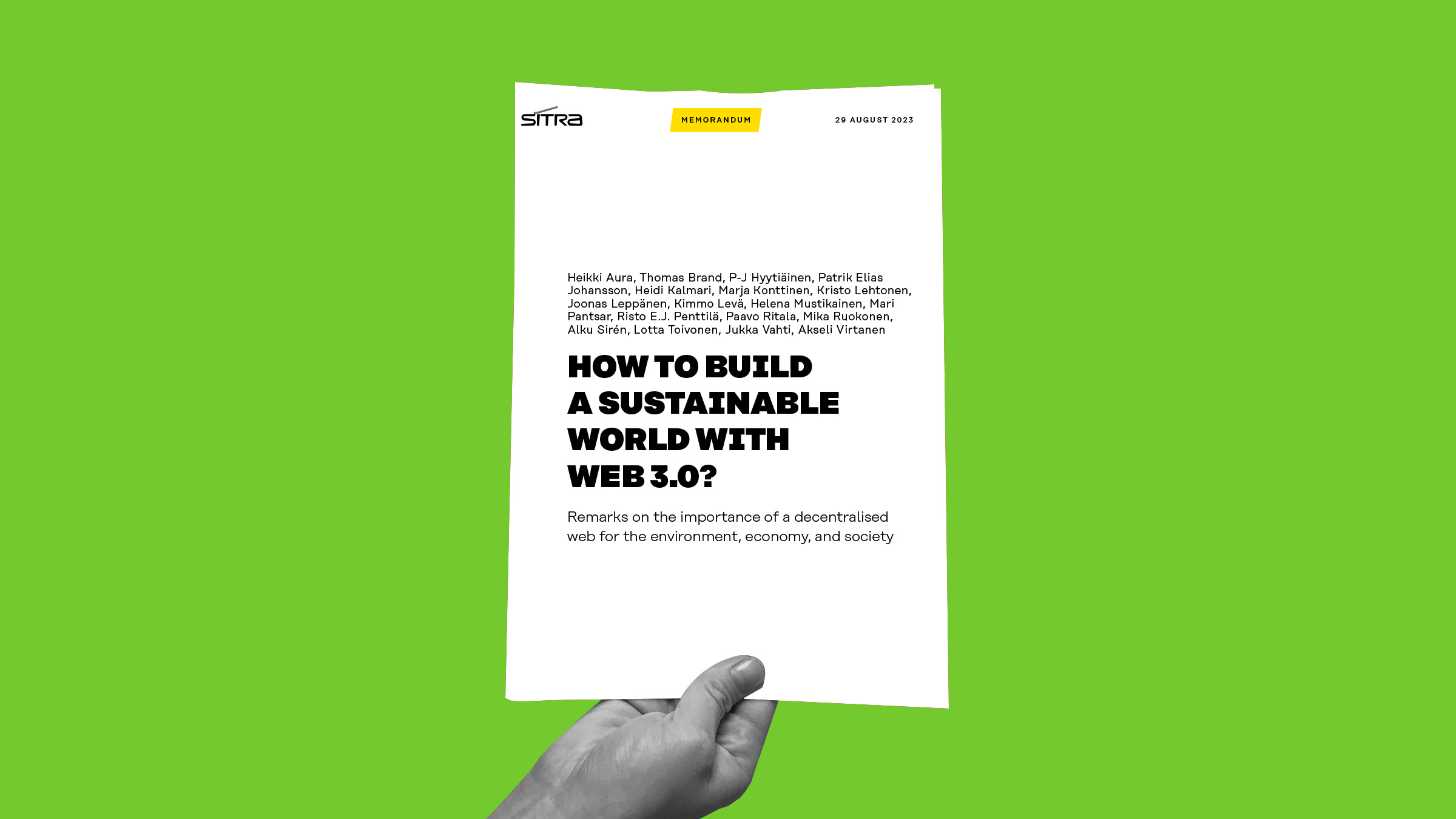

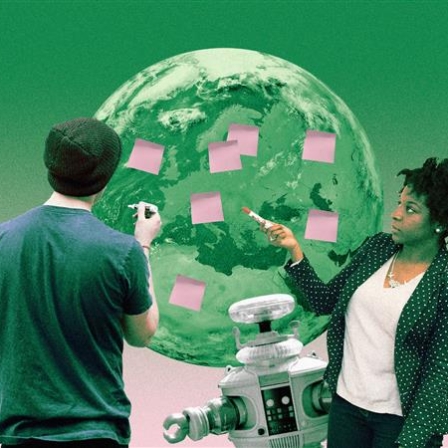
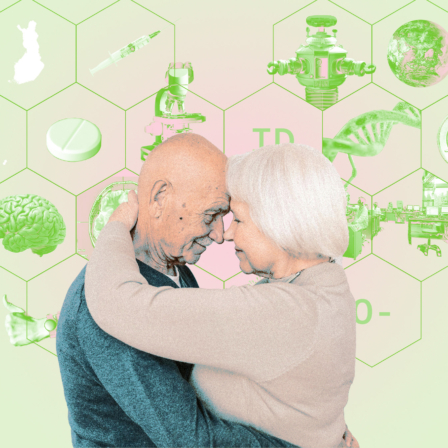

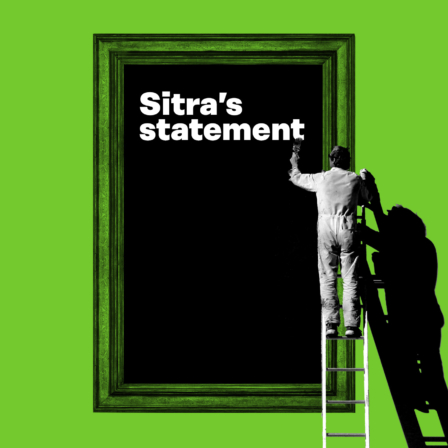

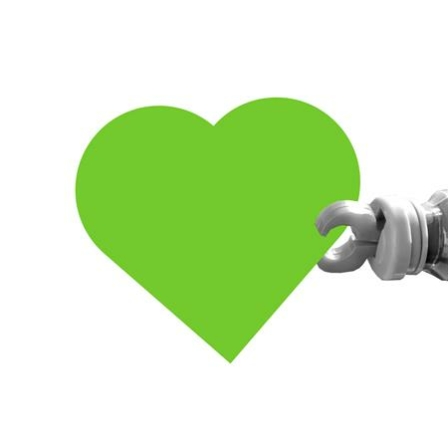
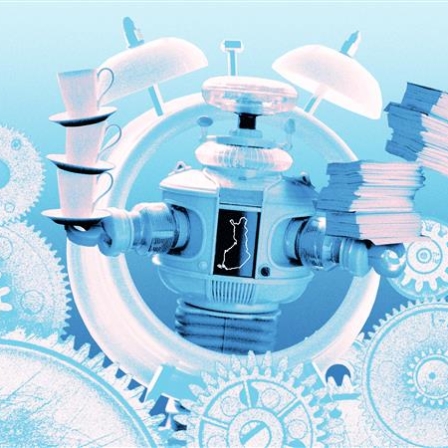
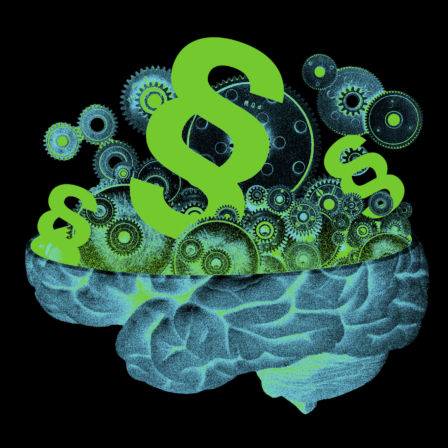
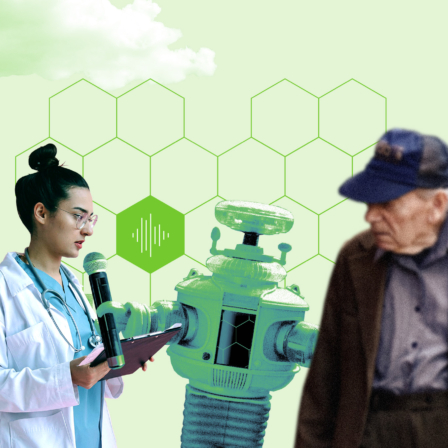

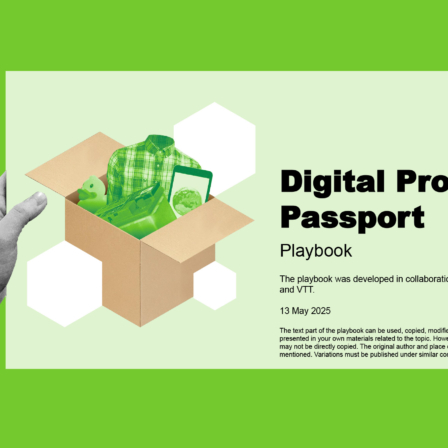
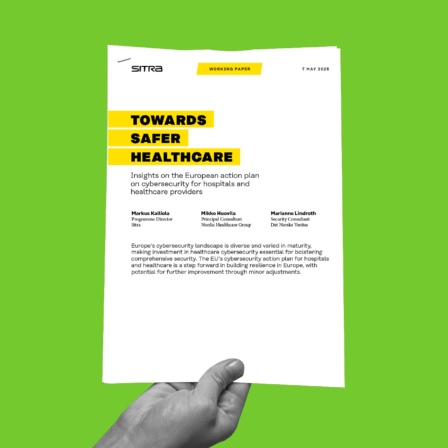

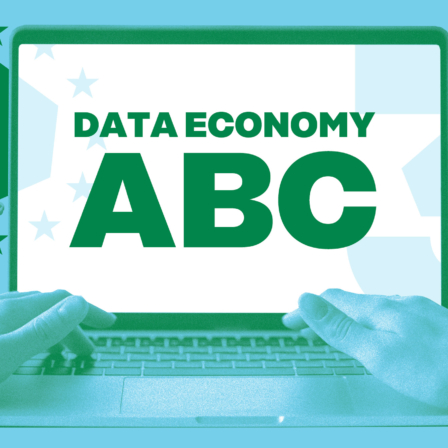
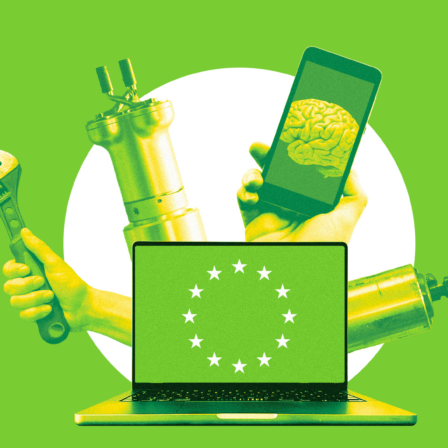
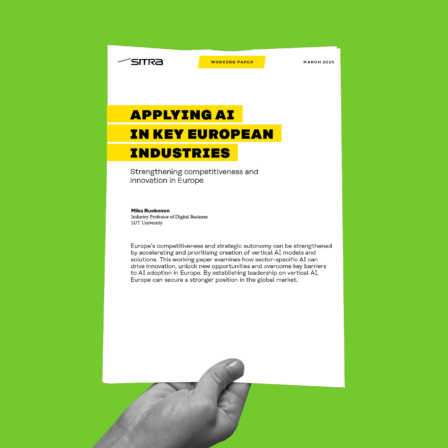
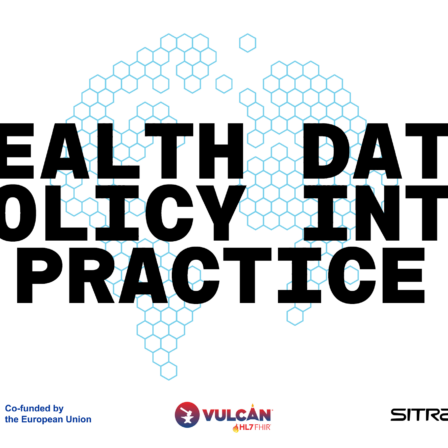

Recommended
Have some more.